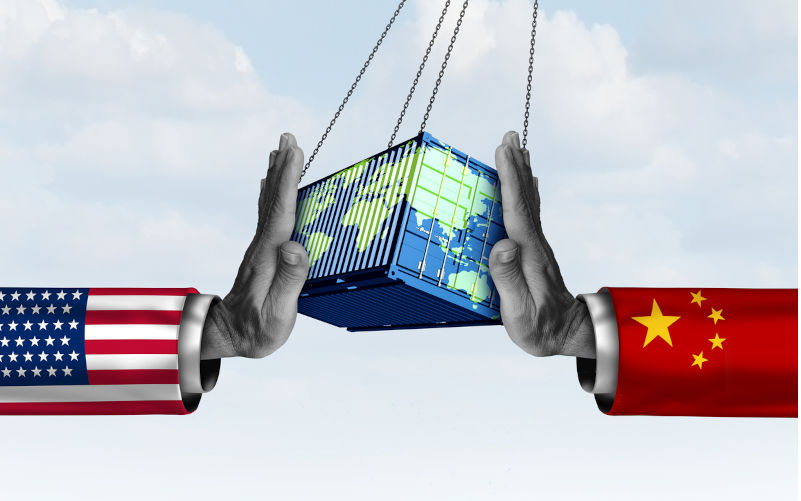Trump’s budget and the 21st century great divergence
July 9, 2025
Donald Trump’s recently passed budget has the capacity to lay the foundation for a widening gap between the world’s two largest economies, the United States and China, and make China as great, comparatively, as it was before the industrial revolution.
In the late 18th and 19th centuries, Western Europe (particularly Britain) and its North American offshoots pulled ahead of formerly great pre-industrial revolution economies such as China and Mughal India. The epoch came to be dubbed the “Great Divergence”. It was a period in which the gap in economic output and living standards between the West and the rest of the world widened in the West’s favour.
The Industrial Revolution, which began in Britain in the late 18th century and then spread to western Europe and North America, played an important part in driving this divergence between the West and the rest. In Britain, technological advancements and the rise of the mechanised factory system were important aspects of the industrial revolution. So was the shift from reliance on biomass and human and animal power to fossil fuels like coal and later petroleum.
The historian, Kenneth Pomeranz, argued in his classic book, The Great Divergence (2000), that as late as the mid-18th century, living standards and economic conditions in Europe and East Asia (particularly in Qing China) were surprisingly similar. Pomeranz argued that Britain’s and Europe’s economic ascendancy had less to do with the enlightenment and the scientific revolution than the fortunate location of Britain’s coal and its access to the wealth of the Americas.
Coinciding with the great divergence was China’s “century of humiliation”, an era that began at the hands of the British with the First Opium War of the 1840s and ended when the Republic of China emerged in the 1940s as one of the “big four” and a permanent member of the United Nations Security Council. China’s century of humiliation coincided with the rise of the US to become the most dynamic and powerful Western economy and leader of the non-communist world.
The huge economic gap between China and the US persisted until the late 1970s when the economic reforms of Deng Xiaoping triggered the extraordinary economic rise of China over half a century, an ascent that surpassed in scale even Japan’s industrialisation and modernisation during the Meiji Restoration of the late 19th century.
President Donald Trump’s “Big Beautiful Bill” of 2025 has the capacity to trigger a 21st century great divergence but this time in China’s favour.
In the 2020s, a new economic revolution is dawning. In this period of revolutionary economic change, those countries that can generate electricity at affordable prices and in the cleanest possible way will have the best chance to nourish AI engines that consume large amounts of electricity.
In the New York Times, Thomas L. Friedman (3 July 2025) is one observer who points to an emerging gap between the US and China in production of electricity. In 2000, China produced 1300 terawatt hours of electricity (a terawatt is equal to a million megawatts) and the US produced 3800. But today, China produces more than 10,000 terawatt hours while the US has only added 500 (or an increase of 13%) to its tally over the last a quarter of a century.
Admittedly, much of China’s electricity output has come from expanded coal-fired generation but, particularly in recent years, it has come also from expanding hydro, solar, wind and battery sources.
The historical significance of this development is that, as a report (“How Xi sparked China’s electricity revolution”) in the Financial Times of 12 May put it:
“China is on the way to becoming the world’s first ‘electrostate’, with a growing share of its energy coming from electricity and an economy increasingly driven by clean energies. It offers China a strategic buffer from trade decoupling and rising geopolitical tensions with the US.”
Meanwhile, Trump’s 2025 budget has cut subsidies from the fastest-growing sources of US electricity: solar and wind. Republican lawmakers are intent on stifling the progress towards clean energy as a folly of the Biden Administration. Trump’s Energy Secretary, Chris Wright, has even called renewable energy a “parasite” on the power grid because it occupies transmission-line capacity that could be delivering more stable gas or nuclear energy.
As reported by Evan Halper in the Washington Post on 4 July, the observations of Aaron Zubaty, chief executive of a large clean energy provider, are instructive. Zubaty comments that many people he works with in Europe are now predicting that the US will not be the dominant superpower in 10 years’ time. This is because economic dominance now depends on who has the most electricity. By only building new gas, coal and nuclear plants, the US will not be able to increase supply quickly enough.
Capacity to generate electricity and to support rapidly advancing technology in artificial intelligence may be one of the most important contributors to a 21st century great divergence in which China opens a commanding lead over the United States economically.
Another factor leading to the accelerating comparative decline of the US is what the Atlantic’s Adam Serwer (‘The New Dark Age,’ 27 May 2025) calls the Trump Administration’s “comprehensive attack on knowledge itself, a war against culture, history and science”. In waging this war, the Trump administration is attacking the economic foundations that made the US, a creation of the enlightenment, the world’s leading economy from the 1890s and global leader from the 1940s.
The views expressed in this article may or may not reflect those of Pearls and Irritations.
